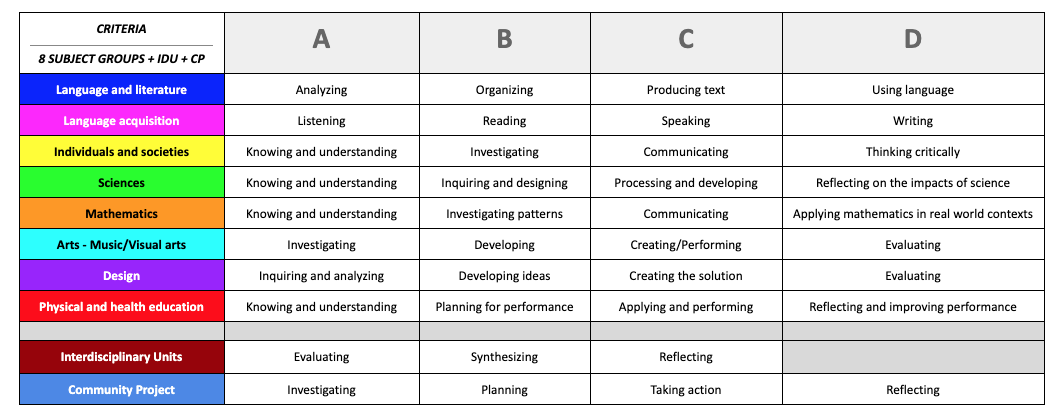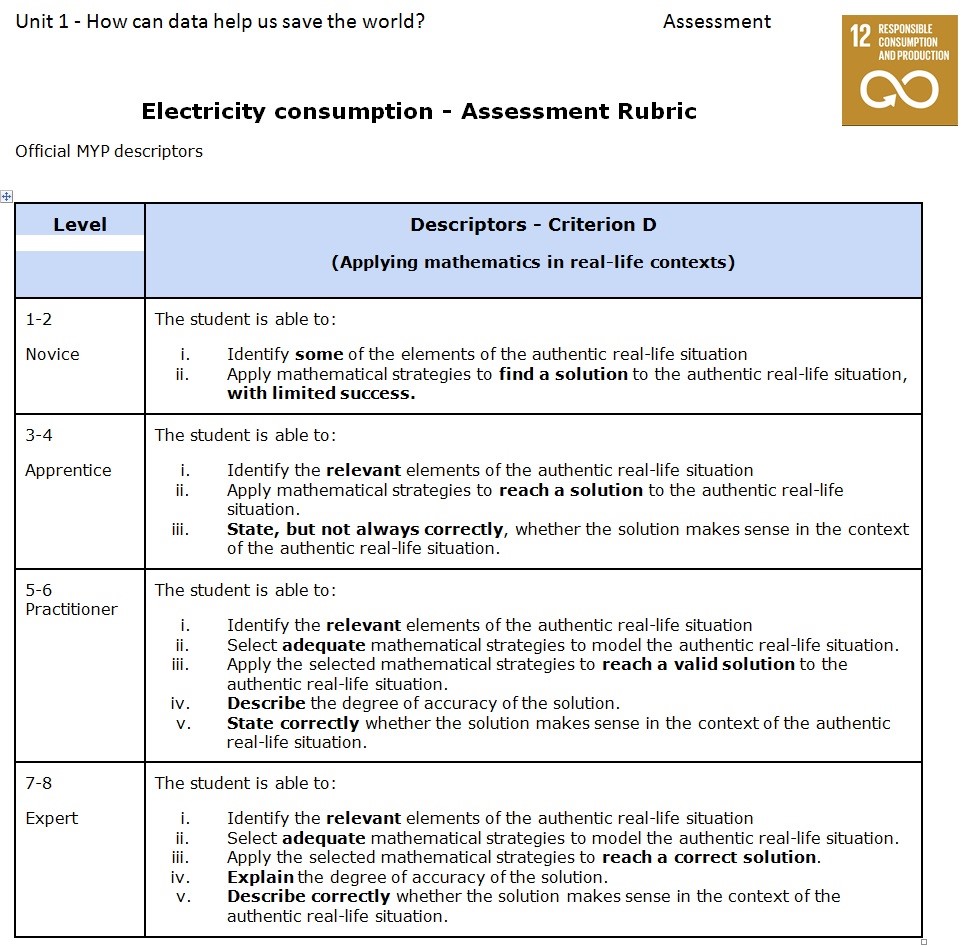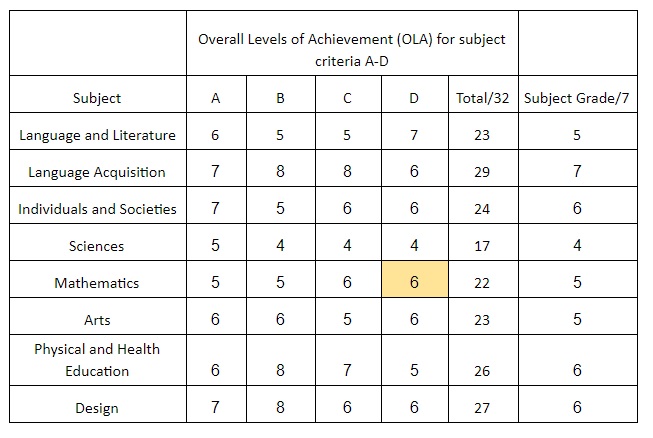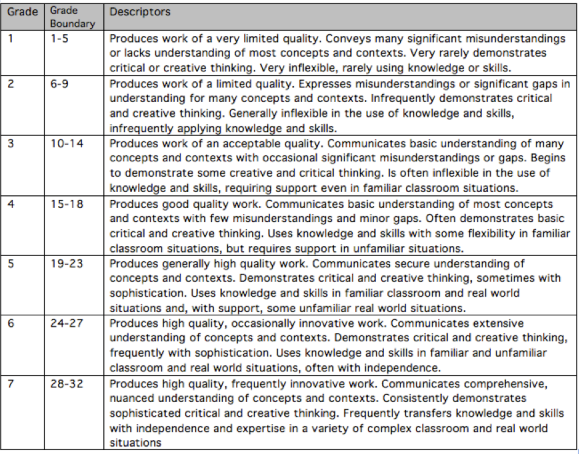A guide to MYP Assessment processes at WIS
Here is a link to a webinar detailing MYP assessment practices and use of baseline data at WIS.
The single most important aim of assessment is to support and encourage student learning. Teachers constantly gather and analyse information on student’s achievement and provide feedback to help them grow.
To be effective, students should be evaluating their own progress using self-assessment and reflection. In doing so, they will develop more effective critical and thinking skills.
MYP Assessment Criteria
All MYP subjects have four assessment criteria as shown in the table (A to D) below and are applicable for Years 7-9 programme. Assessment tasks are set to target these assessment criteria.

MYP Assessment Rubrics
Each subject area will have designed teaching tasks and assessments for the year. Assessment rubrics are shared with students and made available to parents via the FARM.
An example of a criterion D assessment rubric in Mathematics is shown below. In addition to these generic rubrics, students will also be given task specific assessment rubrics which are easier for them to understand.

Note the use of command terms such as apply, explain, state, identify and select. These are examples of the language common to all IB assessments. It is essential that students develop their understanding of the specific meaning of each command term as they progress through each learning stage.
After an assessment is completed by students, their teacher will award a ‘best fit’ level (out of a maximum of 8) which is shared with parents through FARM.
Throughout the year, teachers will have collected evidence of student achievements from many different types of assessments. Sometimes all criteria in the subject are applied to an assessment, but more often only two or three criteria are assessed at any one time.
MYP Annual Reporting of Grades
At the end of the semester, your child’s teacher will award ‘Overall Levels of Achievement’ (OLA) for each of the criteria. Using their professional judgement, the teacher will consider all of the assessments that the student has done throughout the year. A final ‘subject grade’ out of 7 is then calculated from these OLAs.
An example
A student called Roshni may have completed three Criterion D assessment tasks in Maths and achieved levels of 4, 6 and 6. Roshni’s teacher will then make a professional judgment on the ‘best fit’ level of achievement for her in this criterion. This is not an average, the judgement will be based on patterns in the data, the development of that student, and the context that the work was completed in. Because of Roshni’s consistent improvement over the semester, let’s say that she is awarded a 6 out of 8 for this criterion. The 6 is entered into the report card as highlighted in the table below.
End of Year Report Card

In each subject the four criterion levels of achievement are added together to give a total. This total is then compared to the Grade Boundaries Table (see below) published by the IB to give the student a grade out of 7 for that subject.
Roshni’s 6 out of a possible 8 in Mathematics Criterion D would be added to her levels in the other three Mathematics criteria, which would give her a Criterion Levels Total out of a possible 32. If Roshni achieved a OLA Total of 22, she would receive a 5 out of 7 for her final grade in Mathematics (see the table below).

Grade Boundaries table showing how Criterion Level Totals out of 32 are converted into a grade for each subject.
Interpreting if your child is making expected progress
MYP objectives and criteria are adjusted according to the year level of the student. This means the objectives a Year 7 (MYP Year 1) student is trying to achieve are less sophisticated than those presented to a student in Year 9 (MYP Year 3).
To this end, if a student achieves a grade five in Science at the end of Year 7, expected progress would also be achieving a grade five at the end of Year 9.
